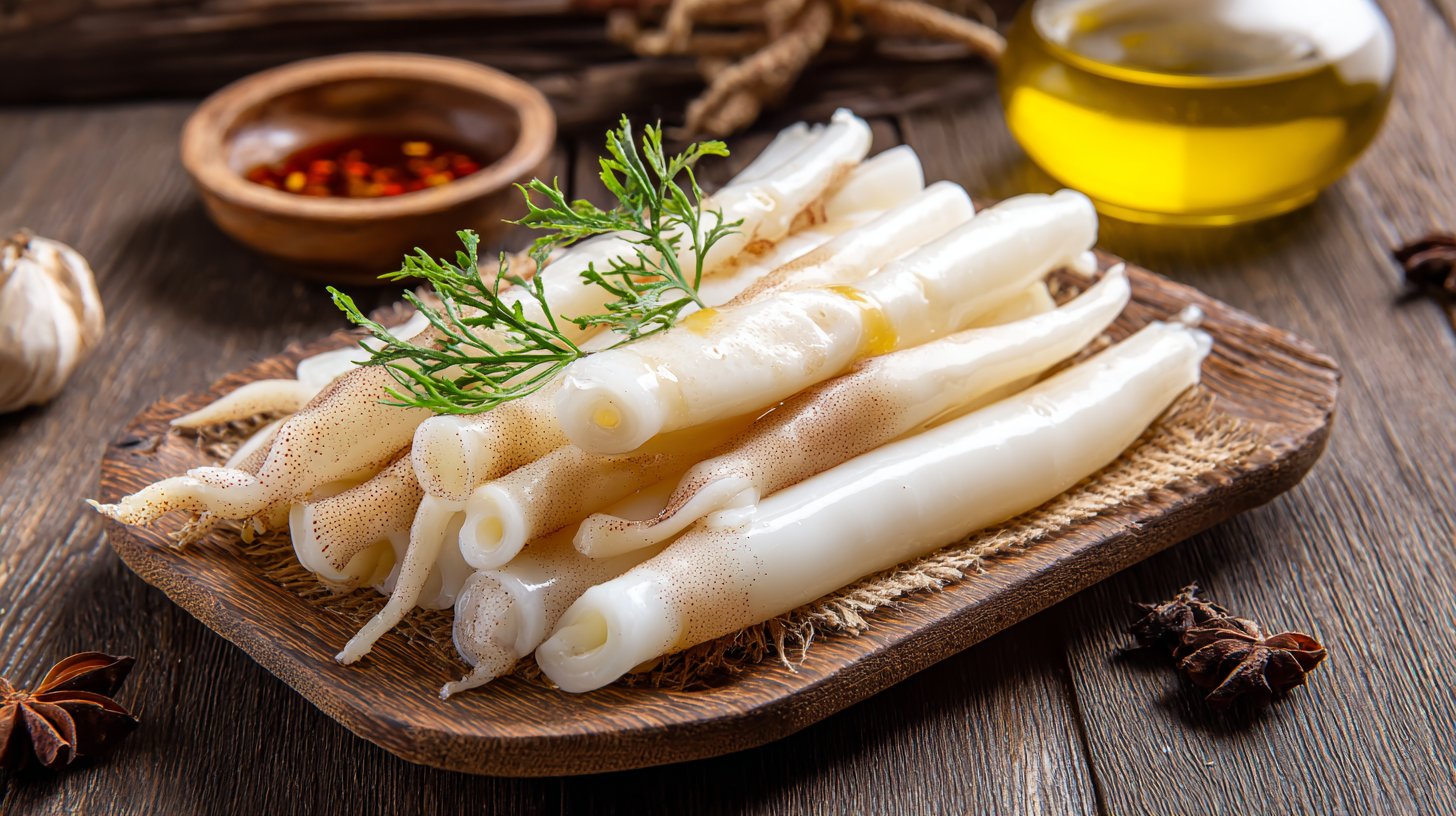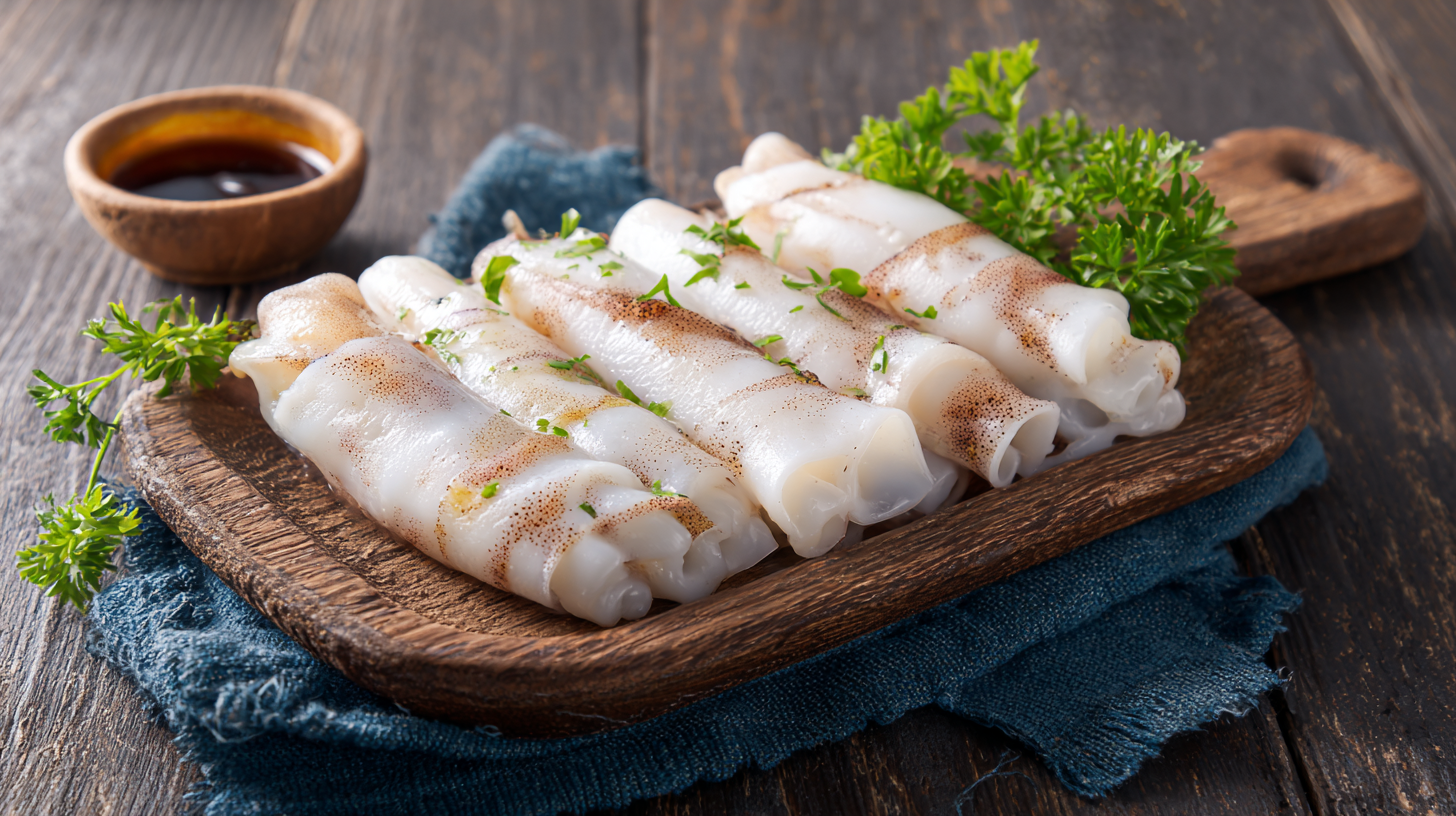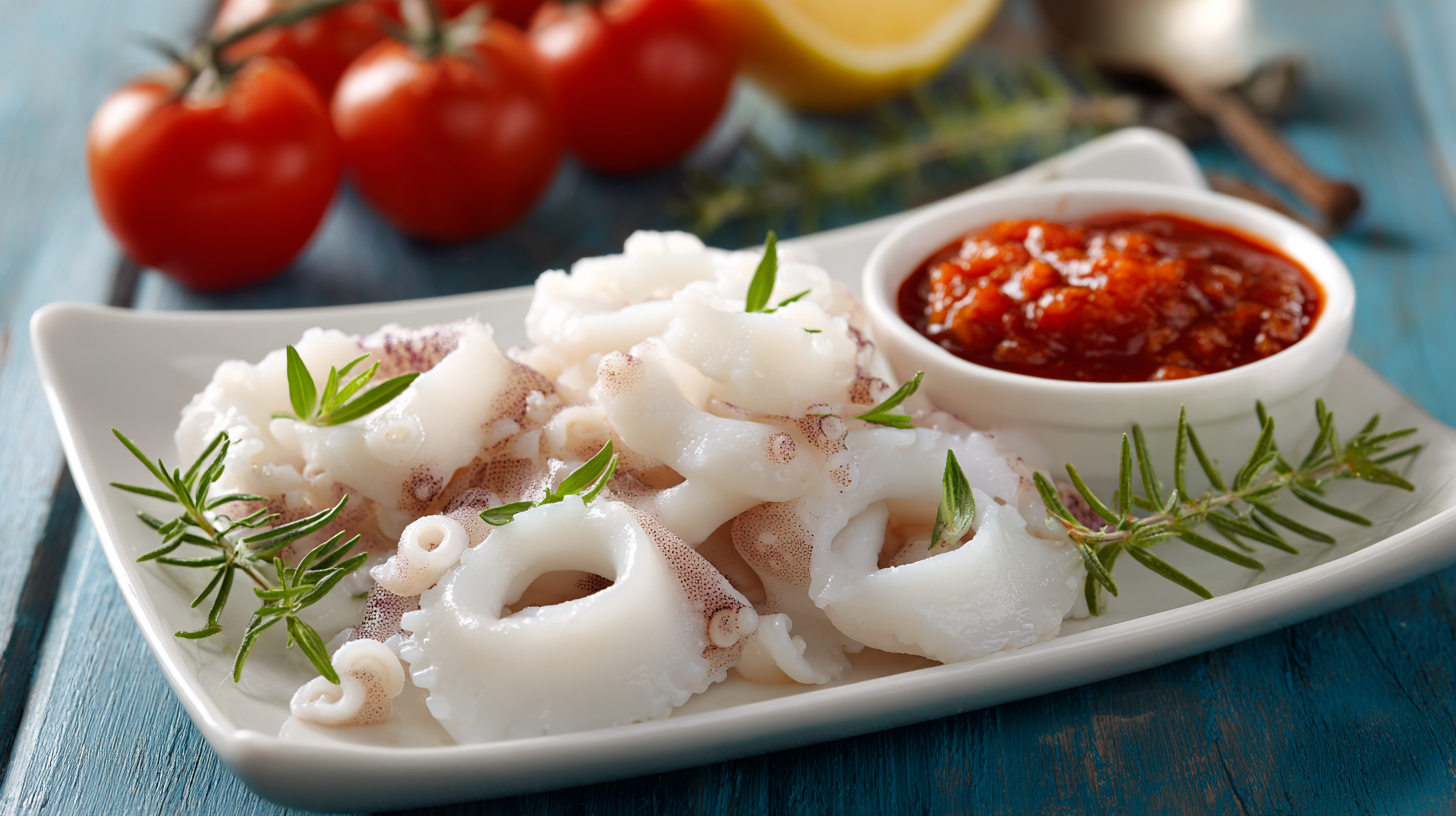 The global seafood market has seen significant transformations in recent years, particularly within the frozen seafood segment, which is projected to reach USD 13.8 billion by 2025, according to a report by Fortune Business Insights. Among the variety of options available, "Frozen Squid With Sauce" has emerged as a favorite among consumers due to its convenience, versatile culinary applications, and rich flavors. This product not only caters to the growing demand for ready-to-cook meals, but it also offers essential nutritional benefits, such as high protein content and low calories, appealing to health-conscious buyers. Furthermore, trends indicate that the adoption of frozen seafood, including squid, will continue to rise as global purchasing behaviors evolve towards more sustainable and ecologically friendly options. As we delve into the advantages of sourcing the best Frozen Squid With Sauce, it's crucial to understand the evolving industry dynamics and the impact they have on global buying decisions.
The global seafood market has seen significant transformations in recent years, particularly within the frozen seafood segment, which is projected to reach USD 13.8 billion by 2025, according to a report by Fortune Business Insights. Among the variety of options available, "Frozen Squid With Sauce" has emerged as a favorite among consumers due to its convenience, versatile culinary applications, and rich flavors. This product not only caters to the growing demand for ready-to-cook meals, but it also offers essential nutritional benefits, such as high protein content and low calories, appealing to health-conscious buyers. Furthermore, trends indicate that the adoption of frozen seafood, including squid, will continue to rise as global purchasing behaviors evolve towards more sustainable and ecologically friendly options. As we delve into the advantages of sourcing the best Frozen Squid With Sauce, it's crucial to understand the evolving industry dynamics and the impact they have on global buying decisions.
The frozen squid market is poised for significant transformation by 2025, driven by changing consumer preferences and innovative product offerings. According to a recent market research report by Mordor Intelligence, the global frozen seafood market, which includes squid, is projected to grow at a compound annual growth rate (CAGR) of 4.3% from 2020 to 2025. This growth is largely influenced by the rising demand for ready-to-eat and easy-to-prepare seafood options as more consumers embrace convenience in their cooking habits.
Additionally, sustainability is becoming a key trend in the frozen squid market. A report from Technavio indicates that eco-friendly sourcing and transparency in supply chains are expected to become critical factors for buyers. With 55% of consumers showing a preference for sustainably sourced products, those suppliers who can verify their sustainable practices—and communicate them effectively—will likely gain a competitive edge. Brands that offer frozen squid with high-quality sauces that enhance flavor and convenience may also see increased traction, as taste and ease of cooking become paramount for busy households.
When it comes to seafood, frozen squid with sauce offers a plethora of advantages that are hard for global buyers to overlook. One key benefit is the convenience it provides. Frozen squid with sauce is pre-prepared, allowing consumers to skip lengthy cooking processes while still enjoying a delicious meal. This ready-to-eat feature is particularly appealing for busy households and professionals who seek quick yet tasty options. Moreover, having a delightful assortment of sauces enhances the flavor profile, catering to diverse culinary preferences and enabling consumers to explore various cuisines without leaving their kitchen.
Another significant advantage is the nutritional value that frozen squid with sauce retains. Squid is rich in essential nutrients, including protein, omega-3 fatty acids, and several vitamins and minerals. By choosing frozen options, consumers can ensure they are receiving high-quality seafood that is flash-frozen at peak freshness, preserving its health benefits. Additionally, packaged sauces often contain wholesome ingredients that complement the natural flavors of the squid, encouraging healthier eating habits while still indulging in a satisfying meal. This combination of convenience and nutrition makes frozen squid with sauce an excellent choice for consumers worldwide.
When selecting the best frozen squid products globally, it is essential to consider several key factors that can impact quality and taste. According to the International Seafood Sustainability Foundation (ISSF), over 70% of the squid consumed worldwide is frozen, making quality selection critical for distributors and consumers alike.
Firstly, pay attention to the sourcing. Products from certified fisheries, such as those that comply with the Marine Stewardship Council (MSC) standards, ensure that the squid caught is sustainably harvested, thus supporting marine conservation efforts.

When it comes to enjoying frozen squid, proper storing and preparation are crucial for maximizing flavor. According to a report by the Seafood Industry Research Coalition, properly frozen squid can retain its taste and texture for up to twelve months if stored at optimal temperatures. It's essential to keep the squid at a consistent temperature below -18°C (0°F) to ensure quality.
Using vacuum-sealed packaging can further prevent freezer burn, preserving the delightful natural flavor and tenderness of the squid.
Preparation is just as vital as storage. The International Journal of Food Science and Technology highlights that thawing squid slowly in the refrigerator instead of using hot water or a microwave can significantly enhance its taste. Once thawed, marinating squid in a mix of citrus juices and herbs for at least 30 minutes before cooking not only infuses flavor but also helps tenderize it.
Optimal cooking methods, such as quick grilling or stir-frying, allow the squid to maintain its succulent texture, making it a favorite choice among global buyers seeking quality seafood products.
The global seafood market is witnessing a significant shift with increasing consumer awareness regarding environmental impact. As the demand for frozen squid and other seafood continues to rise, buyers are becoming more conscious of the ecological footprint associated with their purchases. It has been projected that the ready-to-eat seafood snack market will grow at a compound annual growth rate (CAGR) of 5.5% from 2025 to 2034, reaching a market value of $6.1 billion in 2024. This surge is driven by a growing inclination towards healthy, protein-rich snacking options. The decisions made by global buyers can significantly influence sustainable practices within the industry.
To minimize environmental impact, consumers should consider sourcing frozen squid from suppliers with transparent sustainability practices. Preferred choices often include fisheries that adhere to eco-certifications and responsible harvesting methods. Additionally, opting for products with minimal packaging can further reduce waste. By aligning purchasing decisions with sustainability principles, global buyers can contribute to the long-term health of marine ecosystems while still enjoying the culinary delights of frozen seafood.

